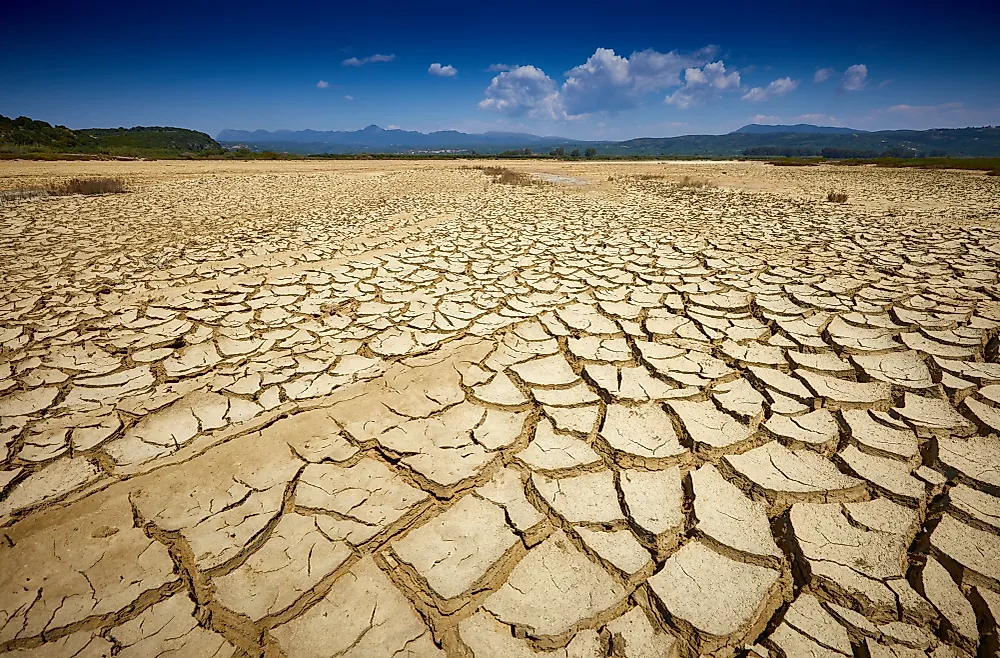What Are The Effects Of A Drought On The Environment?

Droughts are a type of natural disaster that involves below-average precipitation or a severe water supply shortage over a sustained period of time.
Effects of Drought on the Environment
Water is essential to all life on Earth and a shortage of this vital resource in the environment is bound to negatively affect all forms of life. The environmental effects of a drought can include:
Wetlands Dry Up
A deficit of water can lead to the drying out of wetland habitats. Since such habitats support a great variety of flora and fauna, the survival of all these life forms becomes difficult when there is a deficit of water.
Pollution of Surface Water
Low levels of precipitation and the loss of water from water bodies like rivers and streams means that pollutants accumulate on land and in remaining surface water resources. Since rain and flowing water bodies usually carry away the pollutants by draining the land, a lack of such water resources leads to the contamination of soil and remaining water resources with pollutants.
The Health of Plants Is Adversely Impacted
Drought always leads to a loss of plant life. The health of plants growing in a low-water environment is always poor. Plants thus become highly susceptible to pest-borne diseases. As a result, large areas of drought-affected areas often lose their vegetation cover.
Dust Storms Become Common
In the absence of water, soil dries up and becomes susceptible to wind erosion. Thus, droughts often trigger dust storms, which in turn negatively affect the environment including plant life and human health.
Loss of Biodiversity
Most plants and animals living in areas experiencing a severe drought are unable to survive. As a result, entire populations of a species can be wiped out from the area. Thus, drought-affected areas exhibit a great loss of biodiversity.
Wildfires Become Common
The absence of precipitation dries up foliage, and if temperatures are high, this foliage can catch fire. Therefore, wildfires are highly common during droughts. In the absence of rainfall to extinguish the fire, wildfires rage through vast areas, destroying all plant and animal life in the area and leaving the land barren and lifeless.
Animals Are Forced to Migrate
The lack of water and food during droughts force wildlife to migrate to safer places where such vital resources are available. However, many animals die during such journeys. Those managing to reach better habitats often die after failing to adjust to their new habitat.
Increased Desertification
Droughts can accelerate desertification caused by overgrazing, deforestation, and other human activities. The lack of water further kills plants, leaving little chances for the land to recover.











